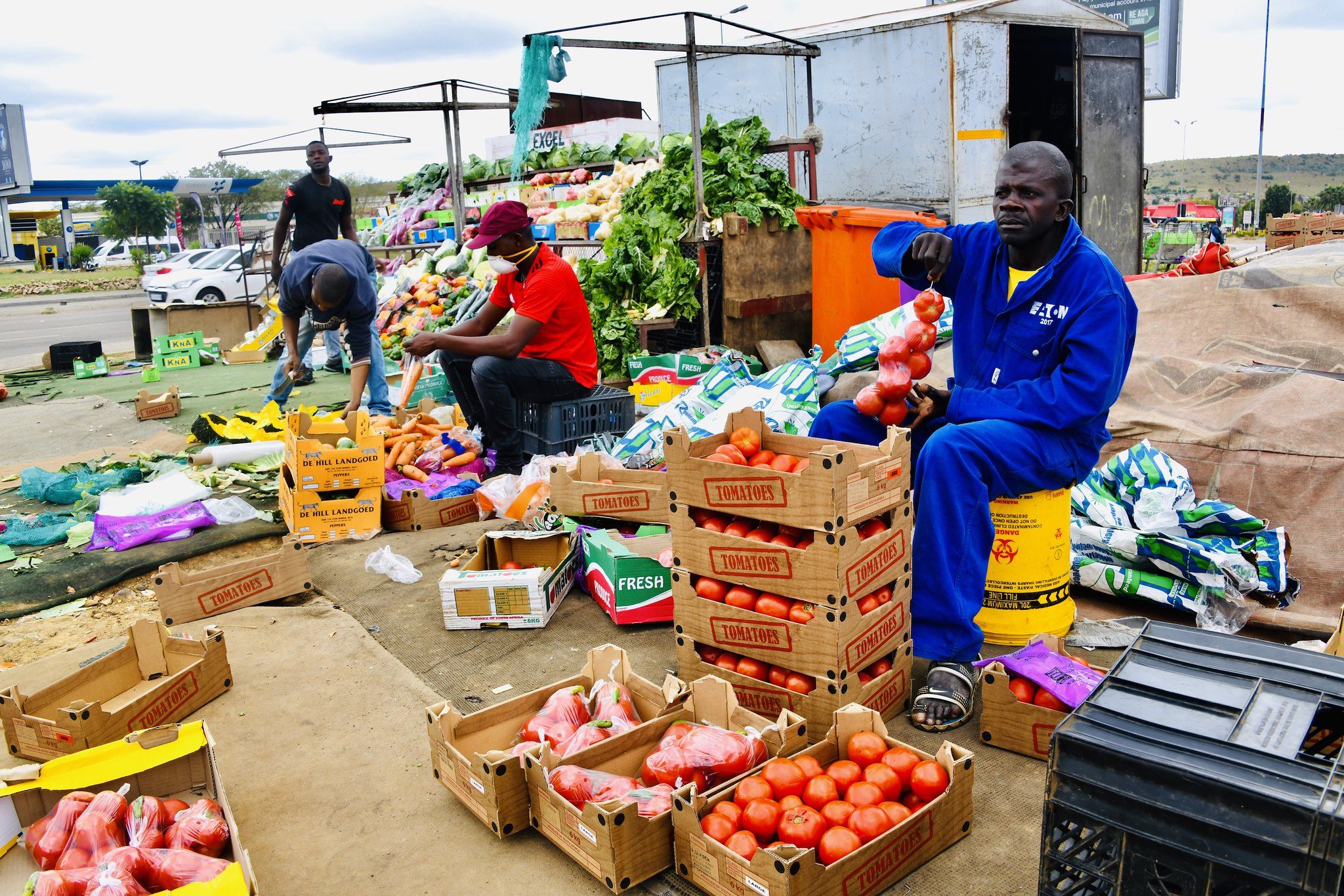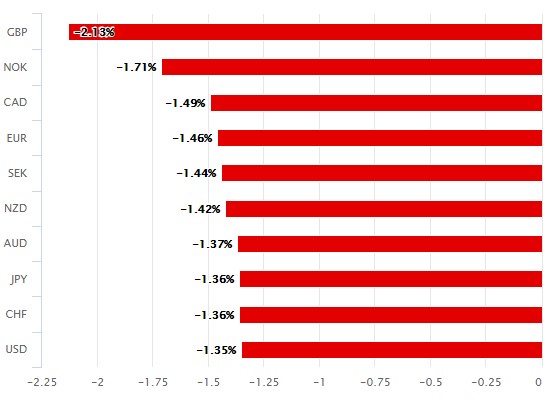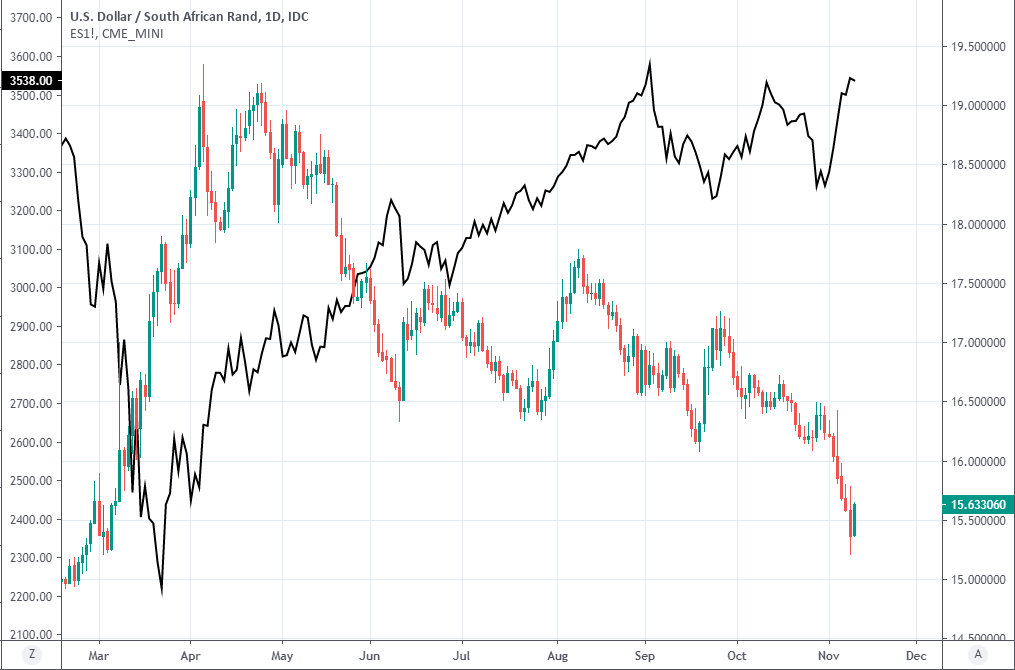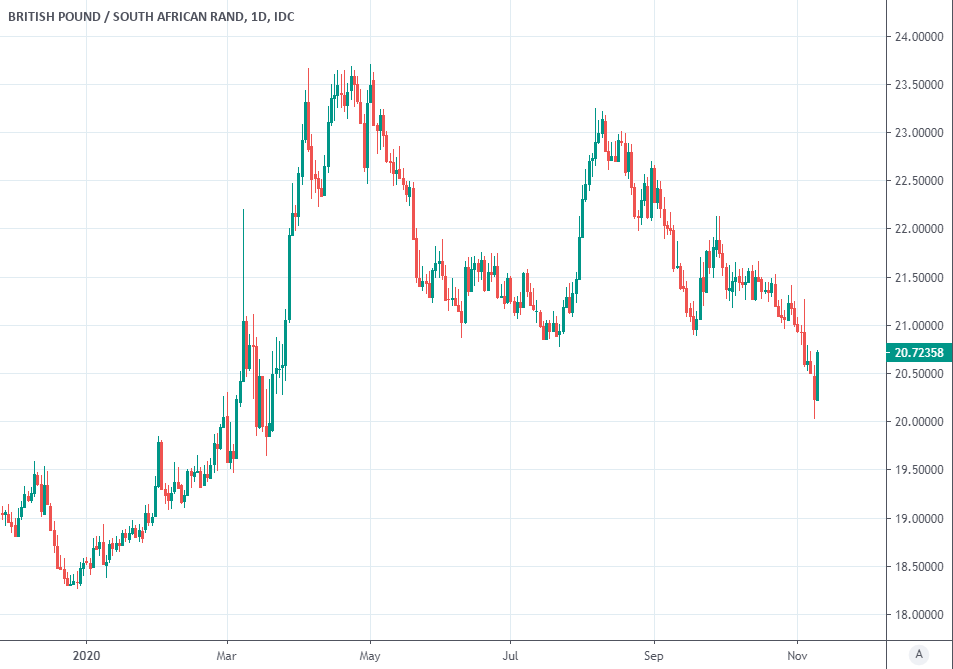South African Rand "to Rise Significantly" in 2021 as Vaccine Boosts Global Economic Recovery
- Written by: James Skinner
 bove: Informal traders in Mamelodi, South Africa during the Covid-19 national lockdown. Image © Government of South Africa, reproduced under CC licensing
bove: Informal traders in Mamelodi, South Africa during the Covid-19 national lockdown. Image © Government of South Africa, reproduced under CC licensing
- GBP/ZAR spot rate at time of writing: 20.53
- Bank transfer rate (indicative guide): 19.91-20.06
- FX specialist providers (indicative guide): 20.33-20.45.
- More information on FX specialist rates here
The Rand suffered a setback on Tuesday with widespread losses pushing it back from February highs against major currencies, although the South African unit could rise significantly next year when a coronavirus vaccine is expected to bolster the global economic recovery, according to Investec.
South Africa's Rand sunk against its largest developed and emerging market counterparts as the Dollar bounced off its post-election lows amid a softening of U.S. stock markets, although Tuesday's moves came hard on the heels of strong gains for the Rand and other risk assets in the prior session.
The Pound-to-Rand pair rose the most of all major South African exchange rates, with Sterling outperforming amid reports that compromises could be on the way from the UK in the Brexit trade negotiations as well as after suffering heavy losses in the prior session.
USD/ZAR was lifted 1.7% from Monday's low around 15.22 as risk appetite faltered following a rally that was built on the back of Pfizer's claims that its coronavirus vaccine candidate is more than 90% effective in trial participants where there was no evidence of prior SARS-CoV-2 infection.
"Commodity prices and currencies gave up most of yesterday afternoon’s gains this morning, but are likely to rise significantly next year as the global recovery strengthens, and additional vaccines come online," says Annabel Bishop, chief economist at Investec. "The rand is currently likely to trade between R15.00/USD and R16.00/USD next year, supported along with the other commodity currencies by the global recovery, and by USD weakness."
Bishop and the Investec team forecast a year-end USD/ZAR rate of 16.50 and a Pound-to-Rand rate of 21.71, with the Rand expected to push both exchange rates lower again next year, taking USD/ZAR down to 15.50 by the end of 2021 and the Pound-to-Rand rate back to 20.99.

Above: South African Rand performance against major currencies on Tuesday. Source: Pound Sterling Live.
All of the above forecasts leave the Rand weaker than it was during the height of vaccine celebrations on Monday, although they would improve with the same kind of quick economic rebound from the coronavirus pandemic that might be likely to follow any successful worldwide rollout of a vaccine.
"It is estimated that only by the end of 2021 will around 1 billion vaccines be available, with the inoculation needing two shots per person to be effective, reducing its coverage to well under 1 billion," Bishop says.
An effective vaccine could enable investors and financial markets to have confidence that in areas where it's available, further 'lockdown' of people, companies and economies can be avoided.
However, a successful rollout and the related economic recovery would be highly contingent on whether the production capacity can be mustered to produce enough to supply the global population with the necessary dosage and Investec has warned of disappointment in this regard.
"We continue to believe that the global recovery will gain traction next year, but commodity prices and currencies, as well as EM currencies, will still be at risk of volatility," Bishop adds.
South Africa moved to alert level 1, the lowest in its five-tier national system, on October 01 which was also when borders reopened for the first time since March, although major European economies including France and Britain have since been subjected to a renewed, albeit lesser form of shutdown.
Above: USD/ZAR rate shown at daily intervals alongside S&P 500 index futures (black line, left axis).
Recovery from damage done by coronavirus containment efforts and a widely anticipated as well as prolonged Dollar decline are expected to help lift the Rand next year but in the meantime, the ebb and flow of investor risk appetite and technical backdrop on the charts will both be key influences on the currency.
"USD/ZAR continues its decline towards the 2018-2020 support line at 15.0710," says Axel Rudolph, a senior technical analyst at Commerzbank. "Strong resistance comes in between the June and October lows at 16.0838/3613. While the cross remains below the 16.4977 late October high overall bearish pressure should prevail."
The U.S. economic growth outlook has dimmed and the Dollar's prospects darkened since Deomcratic Party candidate appeared to clinch victory in last week's presidential election, potentially setting him up to take charge of the White House from January 20, although he must first navigate legal challenges and accusations of fraud from incumbent President Donald Trump.
Biden is a boon for the Rand not only because he likely means cheaper U.S. Dollars but also because he makes another tariff fight with China unlilkely given his advocacy of the engagement policies that governed Washington's relationship with the country since long before Trump. Tensions are expected to remain between the world's two largest economies but with talks prevailing instead where tariffs might've been used under a second Trump administration.
"Some of the major risk factors driving markets in recent months have started to diminish. That said, we think a lot of this good news is now in the price for the USD — at least in the short-term. This has us looking for the USD to trade on a firmer footing for now, although we think any rebound would provide an entry point for longer-term dollar shorts," says Mark McCormick, global head of FX strategy at TD Securities.
Above: Pound-to-Rand rate shown at daily interval.






